
Last week Minor Weir & Willis Ltd supported a key Commonwealth business exchange event sponsored by Birmingham City Council, The Food Foundation, and Birmingham Commonwealth Association The event over 2 days comprised of presentations in UK House The Exchange and Symphony Hall and was kicked off by our PM Boris Johnson. On the second day MWW hosted a large number of Commonwealth business delegates at our Head Office for a site tour.

In 1954 Mr Kewal Krishen Mehta arrived in Birmingham from Jalandhar India.
He then joined Minor Weir and Willis (MWW) in 1961 and in 1974 the Mehta family took 100% control of the company.
Under the stewardship of the Mehta family the company has grown significantly turning over £350M and dealing with 900+ global suppliers.
MWW now trades with over 50 countries and 12 Commonwealth Countries
They handle in excess of 60 fresh produce lines.
Operates 24 hours a day, 7 days a week.
Has a £350M global turnover.
Directly employs over 1400 colleagues.
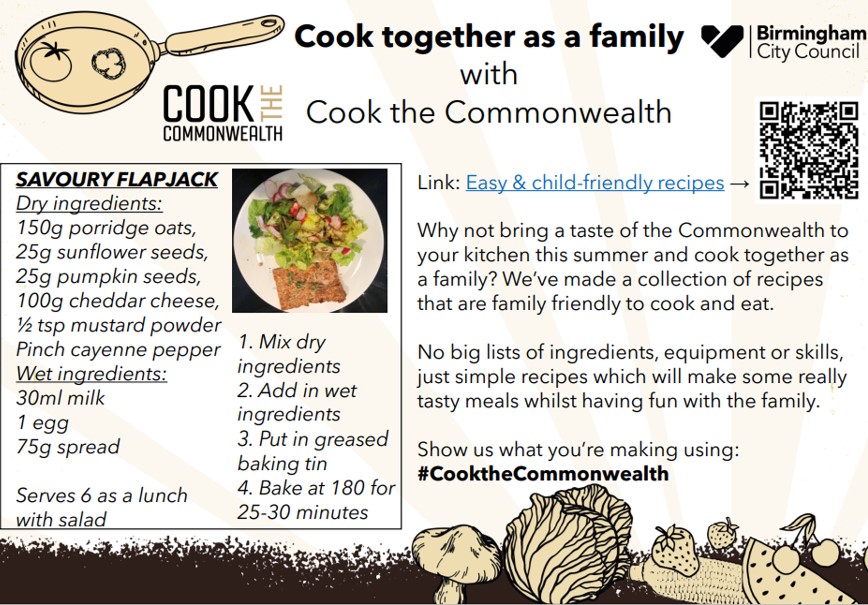
We want to help children and families cook tasty
and healthy food at home, using the appliances
which are available to them. The child friendly
recipes are simple and easy to follow, whilst
encouraging children to be creative and
increasing their confidence in the kitchen.
The Cook the Commonwealth project is the
perfect opportunity for you to cook and spend
some quality time with your children over the
summer holidays. Cooking is an activity which
the entire family can enjoy, whilst introducing
each other to new foods which you wouldn’t
have tried otherwise! #CooktheCommonwealth


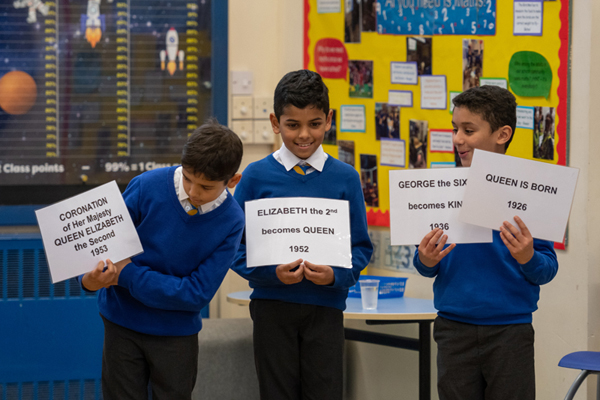
Official Jubilee programmes to get involved in
There are a number of official programmes that schools can join in. Many of them have education resources, packs and templates you can download online.
The Queen’s Green Canopy (QGC) is a tree planting initiative created to mark the jubilee which invites people from across the United Kingdom to “Plant a Tree for the Jubilee”. For schools, the GQC has partnered with the Woodland Trust’s Free Trees for Schools and Communities
Platinum Jubilee Beacons is the first community event of the jubilee weekend. More than 1500 beacons will be lit across the UK, Channel Islands, Isle of Man and UK Overseas Territories. There’s an information pack with full details, and even instructions on how to construct your own beacon.
The Platinum Jubilee Pageant is taking place in London on Sunday 5th Local communities are encouraged to get involved by hosting their own events, so schools can either join in local events or hold one of their own.
River of Hope is an arts-based learning project linking schools around the world through the study of rivers. Registrations have closed but there are free education resources available for schools to help students engage in this key environmental area.
Big Jubilee Lunch. Who doesn’t love a lunch? Schools can download a free pack to help organise a Big Jubilee Lunch and there are teaching resources available too.
Visit exhibitions and displays. From July 2022, royal residences at Buckingham Palace, Windsor Castle and the Palace of Holyroodhouse will have special displays marking significant occasions in Her Majesty’s reign. Plus, the Tower of London is hosting a ‘Superbloom’ field of flowers that will fill the Tower’s moat.
Over the jubilee weekend too, there are lots of official events taking place, such as the Queen’s Birthday Parade (Trooping the Colour), a Service of Thanksgiving and Platinum Party at the Palace.
Ideas for school Platinum Jubilee events and activities
There will already be lots of Jubilee events planned in your local area. The Department for Digital, Culture, Media & Sport’s interactive map is a handy tool to find out what’s happening around you.
1952 day. Dress up in 50s style and have a themed school lunch menu. Look at what school was like in 1952 and link to the history of your school.
1950s sports day.
Learn a dance from the 1950s.
1950s music show – live or digital.
Craft fair with Jubilee-themed bunting, artworks and games.
A Jubilee bake sale. The Royal Collection Trust has a range of Royal recipes, including scones, chocolate biscuit cake and clementine macaroons.
A commonwealth day, exploring the countries of the commonwealth, their food, culture and history.
Connect with other schools from around the commonwealth, for example, video calls with overseas schools.
Create a visual timeline with key events from Her Majesty’s reign.
‘Then and now’ photography exhibition, researching old local photos from the 1950s and taking new photos to show how things have changed.
A dog show – after all, the Queen loves Corgis!
Sponsored walk, cycle, row, swim, sing or bounce.
A Jubilee trail around the school, collecting Jubilee facts along the way.
Invite speakers into assemblies – for example, local people.
Here are a few ideas for your school:
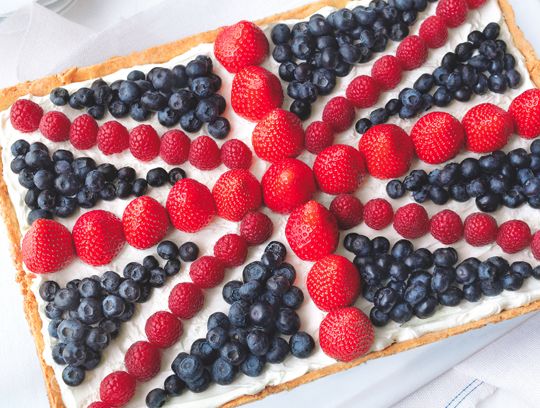
Get the kids involved in your Jubilee Party preparations with an easy cake that they will love to make.
Ingredients
100g butter or baking spread, softened, plus extra for the tin
175g self-raising flour
50g ground almond
2 tsp baking powder
4 large eggs
225g caster sugar
125ml full-fat Greek yogurt
zest 2 lemons
For the butter icing
175g butter , softened
350g icing sugar , sieved
To decorate
300g raspberry
175g blueberry
Method
STEP 1
Heat oven to 180C/160C fan/gas 4. Butter and line a 30 x 20cm traybake tin with baking parchment. Measure all the sponge ingredients into a mixing bowl and mix together using an electric hand whisk until smooth. Spoon into the tin and level the surface.
STEP 2
Bake for 25-30 mins until lightly golden and the top of the cake springs back when pressed with your finger, and the sides of the sponge are shrinking away from the sides of the tin. Carefully lift the sponge out of the tin, then transfer to a wire rack to cool. Remove the baking parchment.
STEP 3
To make the icing, tip the butter into a bowl and whisk using an electric hand whisk until light and fluffy. Add half the icing sugar and whisk again until incorporated. Add the remaining sugar and whisk again until smooth. Spread the icing over the top of the cold cake.
STEP 4
To decorate, place a double row of raspberries across the centre and down the length of the cake to make a cross. Next, place a single row diagonally from each corner to the middle. Now fill in the empty spaces with blueberries. Cut into squares to serve.
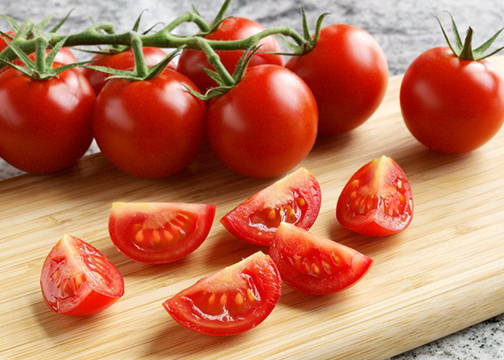 Cocktail Tomatoes
Cocktail Tomatoes
Our Spanish supplier sends us the tomatoes in April and May before we switch over to our Netherlands partner in June until September.
Initially we started delivered cherry tomatoes in schools way back in 2007 after much tastings and trials in local schools we came up with the Cocktail Tomatoes on the Vine. We have found that there is absolutely no waste because the kids and the teachers absolutely devour them. Some schools even manage to serve them up as tomatoes on toast at breakfast time.
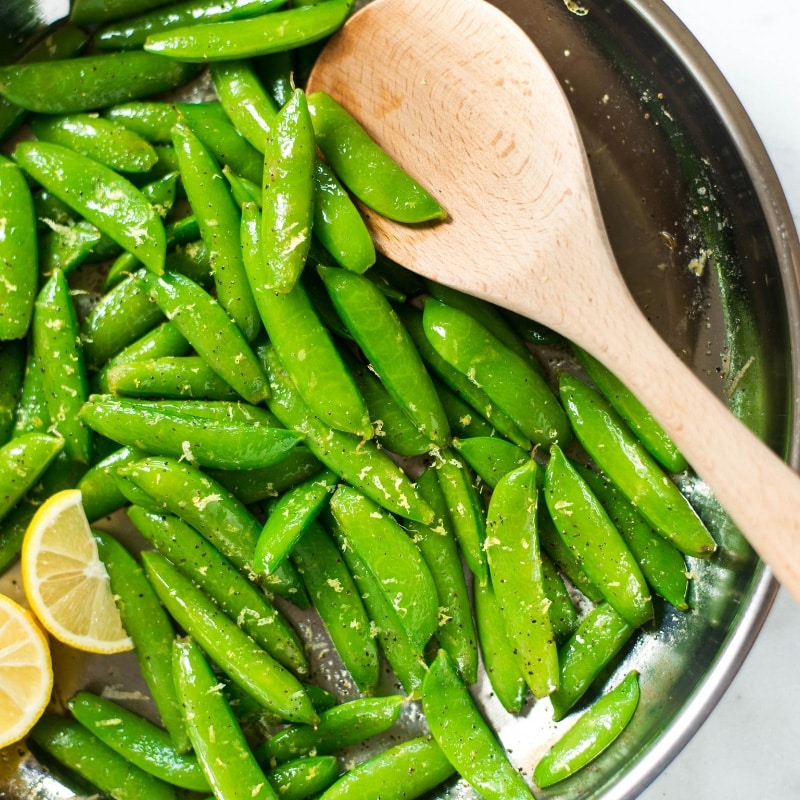 Sugar Snap peas
Sugar Snap peas
When we first introduced this product in the UK High Street retailers all of the product was imported from Africa and South America. We quickly learned that some of these varieties would grow during our own summer season from June to September. So during the 4 planned consumptions starting at the end of June you will also eat Herefordshire and Worcestershire grown sugar snaps peas.
Did you know how healthy Tomatoes are for our Children:-
One Cocktail Tomato contains 17% of the RDA of Vitamin C.
A great source of Beta Carotene for healthy vision.
Rich in Calcium to keep bones strong.
They are low in sodium and fat but high in fibre

Jonathan Ashworth MP came along to support the fresh fruit & veg tasting event at Evington Valley Primary School. Deputy Head teacher Adrian Manning said ” it was a super experience for our children and they enjoyed it very much. It was lovely to see the children’s enthusiasm to try new fresh fruit & veg and discover new things they would enjoy eating. The session was organised very well and the children learnt a lot about the produce and also about the ecological issues connected to the packaging. Overall it was a valuable experience for our pupils and it was great for Jonathan Ashworth MP to be able to join us to share the importance of healthy eating with the children”.
Kids in the West Midlands have had the opportunity to try new types of fruit and veg under a scheme by MWW to encourage healthy eating in young people. Click on the link below to see the report:
New vegetable crop give kids a taste for the exotic – YouTube
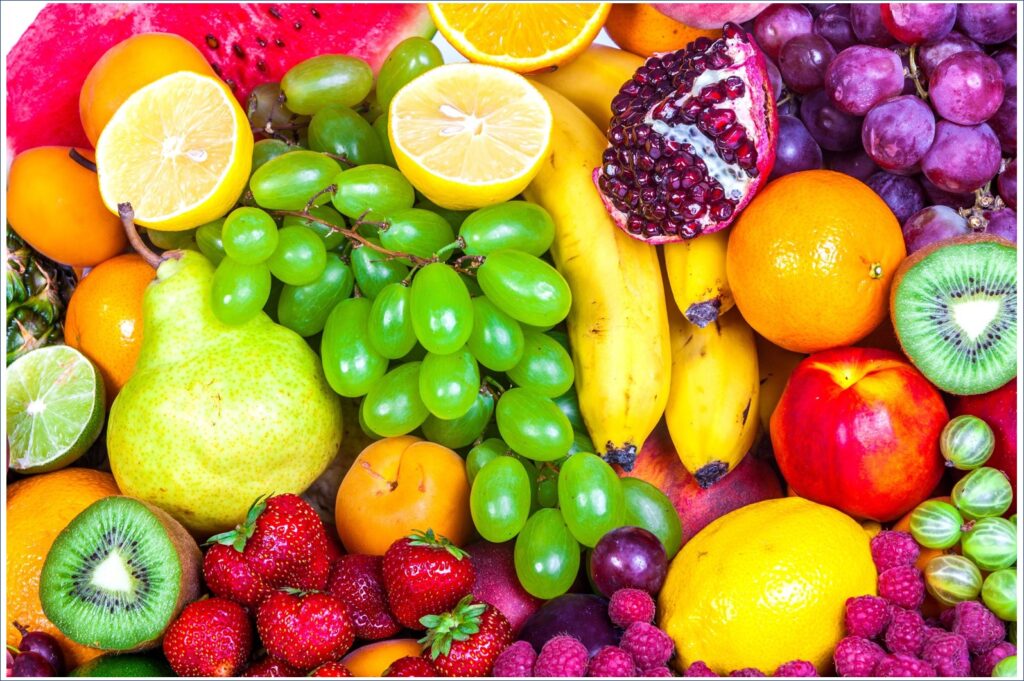
Good Afternoon to all Birmingham Primary Schools.
We hope you are all safe and well today.
Have you got an Ex Pupil that has competed in the Commonwealth Games? If you have please let us know!
The countdown is well and truly on for the opening of our Commonwealth Games on 28th July
Did you know 72 countries are attending in July and August.
And we are asking if all of the 72 nations are represented in our schools ?
The 72 nations are all listed on the Games website it would be great to know just how many nationalities attend your our school.
Is your school combating food waste?
Do you have a Thrift Make Do Friday?
Do you share perishable residue school food with the parents or the local community
Are you cooking recipes that include all ‘saviour foods’
We would love to hear about your schools own success stories in helping to reduce food waste.
We thought we would share some interesting foods facts that contribute to food poverty, hunger and land fills challenges in the UK every day.
- If global food waste was a country it would be the third-largest emitter of greenhouse gases after the US and China.
- The UK throws away around 9.5m tonnes of food waste in a single year – even though 8.4m people in the UK are considered to be in food poverty.
- Bread, followed by bagged salad and then fresh vegetables comprise the top three ‘most thrown away’ food items.
- According to WRAP, worldwide we waste a staggering 1.3 billion tonnes of food globally each year, which equates to one third of all food produced for human consumption.
- The United Nations Environment Programme’s 2021 Food Waste Index estimates that foodservice globally is responsible for 244m tonnes of food waste annually.
- The average household around the world is responsible for 74kg of food waste each year.
For our survey we contacted 7,652 primary schools and 621 schools responded.
During the Autumn 2021 term the children enjoyed: Apples, Pears, Carrots, Bananas, Cocktail Tomatoes, and Soft Citrus
SURVEY RESULTS:
96.1% of the 621 respondents noticed a positive impact on the mood and well-being of school children, when giving them fruit and vegetables every day in the class room.
87.9% of the 621 respondents noticed a positive impact on the children’s concentration and learning behaviour in the class room, when giving them fruit and vegetables.
32.4% of the 621 respondents indicated that the mid-morning free fruit could be the very first food that the children eat for as many as a half of the children in their class each school day.
74.8% of the 621 respondents said that they were able to incorporate learning about fruit and vegetables, and healthy eating, into discussion when they hand out free fruit and vegetables in class. Confirming that it really adds value to the curriculum.
80.8% of the 621 respondents reported that older children continued to carry on to some degree with healthy eating habits, after receiving free fruit and vegetables as a snack in primary school.
96% of the 621 respondents said that they would like to see all children receive free fruit and vegetables, every school day.
21.4% of the 621 respondents noted that families may have a lack of knowledge of the values that healthy eating brings to the children.
61% of the 621 respondents noted that a lack of affordability was the main barrier to families eating more fresh fruit and vegetables
91.8% of the 621 respondents believed that children should have access to up to 3 pieces of fruit and vegetables for snacking in a school day.
Overall:
The feedback further emphasizes the value of intervention and the value of eating healthy snacks each day as part of the formal education.
Eid al-Adha (the Feast of Sacrifice) is the Muslim celebration of the prophet Abraham. Today there are nearly 1.6 billion Muslims living around the world who will take part in this four-day holiday.
What is the history of Eid al-Adha?
The holiday commemorates Abraham, and his first son Ismail’s, commitment to obeying God’s demand of sacrifice. Abraham had a vision of himself, sacrificing his eldest son. Believing that this was a divine order from God, Abraham told Ismail of his vision who believed that Abraham should fulfil his divine vision. However, when both Abraham and Ismail were prepared to begin their sacrifice, God sent a ram to offer as a sacrifice instead. God then rewarded Abraham, for following his test of loyalty and submission, by giving him another son (Isaac) and a grandson (Jacob).
This is a lesson on the importance of sacrifice, for Muslims, and their commitment to putting aside their personal desires before the will of God. Muslims celebrate Eid al-Adha to remember their sacrifices and the important example of their prophets, like Abraham and Ismail.
There are versions of this story written into the Quran, the Bible and the Old Testament, demonstrating the common roots of Judaism, Christianity and Islam.
What happens on the day?
The day usually starts with Muslims dressed up in their best clothes and making their morning prayers, before visiting friends and family and sharing food and gifts. If they are able to, Muslim traditions expect families to buy wither lamb or goat and then slaughter it according to Halal standards. In order to meet these standards, the animal must be cleaned and healthy before it is killed, the animal must be slaughtered quickly to avoid pain and suffering and a blessing must be said after the killing. This process is supposed to be a symbolic gesture of Abraham’s sacrifice to God.
The importance of food!
Food is a very important aspect of Eid! As mentioned before, the main ingredients for this celebration are either lamb or goat! However, different countries and regions across gthe world prepare different menus depending on their culture!
For example, in Turkey families may choose to make kebabs, whilst many Southeast Asian countries, like Pakistan, cook curries such as biryani. American families often favour seared lamb, whereas in Morocco many families enjoy a tagine. There is so much variety! (Take a look at our recipes section for some cooking ideas!)
Part of our Kidsfruit mission is to inspire children and adults to eat a wider variety of fruits and vegetables. As part of this, we have teamed up with Chef Jake at Totteridge Academy to help introduce more exotic fruits into the school lunch menu.
Kidsfruit provided Totteridge Academy with a whole range of exotic fruits and vegetables to try at lunch and snack times, and we are glad to report that both children and staff absolutely loved them! The figs, kiwis and kakis were added to the fruit bowl for snack time, whilst the avocados were carefully chopped and added to the salad bar. Jake then chopped up the kiwis, pineapples, grapes and melon to make a juicy fruit salad for a healthy and delicious dessert, what a treat!
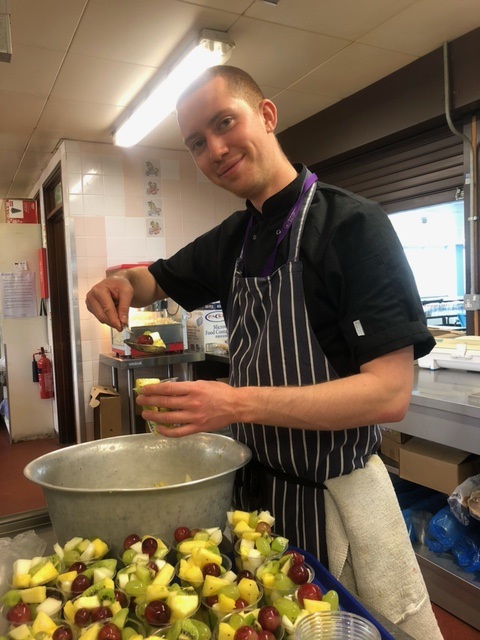 Jake preparing the fruit salad for dessert.
Jake preparing the fruit salad for dessert. The delicious, exotic fruit salad.
The delicious, exotic fruit salad. Chefs preparing the avocado for the salad bar.
Chefs preparing the avocado for the salad bar. Mangoes, kakis and figs provided by Kidsfruit.
Mangoes, kakis and figs provided by Kidsfruit. Coconuts, pomegranates and kiwis provided by Kidsfruit.
Coconuts, pomegranates and kiwis provided by Kidsfruit. Chefs enjoying their delivery of exotic fruits.
Chefs enjoying their delivery of exotic fruits.
For more ideas on how to prepare and eat exotic fruits and vegetables check out our recipes section.
If you would be interested in organising an exotics delivery to your school please get in touch using our social media or email us!
T Wilson and Sons Company have been farming at Maggot Nooks Farm, in Rainford, for over 40 years and they now employ over 100 staff. They grow vegetables on around 1,700 acres of land spanning across Lancashire, Cheshire and Merseyside. On the farm, they grow carrots, cabbage, cauliflower, broccoli, potatoes and leeks, to supply to supermarkets and foodservice customers across the UK.
The carrots, grown at Maggots Nook Farm, are also supplied to primary schools across England for children and staff to enjoy! They are harvested in fields, before being washed, packed and dispatched from the warehouse – normally within 24 hours from the carrots being lifted from the ground! Let’s take a look at how this happens …
- Carrots are harvested and bought to the packhouse for washing and sorting.
- The carrots then go through a final inspection, before they are packed into bags by machines.
- The Carrots are put on pallets, and stored in a fridge, before they are loaded onto a lorry.
- The Carrots are then delivered to customers on a lorry.
Weather and Climate
The weather has a large impact on growing vegetables, such as carrots. As Maggots Nook Farm is located in the northwest of England, they normally experience a lot of rain with a bit of sun (and everything in between)!
In some seasons, the climate can be very helpful for growing vegetables, while other seasons make farming conditions very difficult.
In order to supply their customers, the farmers at Maggots Nook Farm have to access their land every day of the year! The weather dictates whether the farmers are either cultivating, planting, sowing or harvesting crops, depending on the season.
Growing Carrots
The process of growing carrots continues throughout the entire year, in a cycle! Once the cycle is complete the process starts again from the beginning!
The Environment
Maggots Nooks Farm is involved in countryside stewardship schemes, which are designed to benefit the environment in a number of ways:
- The farmers plant and sow wild bird seed mixes and rough grasses to encourage wildlife.
- The margins around the fields and designated plots are homes to many insects, birds and mammals.
- A large number of Lap Wings, Grey Partridge and Hares have been sustained through the environmental projects!
Crop Rotation
Crop rotating is one of the most basic techniques farmers can use to assure plant crop success. This is where a pattern of different types of crops are grown in the same area across many growing seasons. For example, one year you might grow potatoes in one field, but the next year you might grow carrots in that field, and the year after you might grow leeks in that field, before returning to growing potatoes again. This would be a 3 year crop rotation.
This helps increase the productivity of the crops and the soil, as it reduces continual reliance on the same nutrients, whilst minimising the chance of developing resistant pests and diseases.
Audits
Each year Maggots Nook Farms has to pass a number of audits and inspections, to allow them to sell their food. These are the Red Tractor audit and the BRC audit. This demonstrates that the company has passed all of the correct procedures and processes to be able to grow and supply food.
Kidsfruit has sponsored Ruby from birth. She is a now half way (12 months) into her 24 month training programme!
Throughout lockdown, Ruby has been living with her puppy raisers Richard, Kay and Scout. They have been taking Ruby going on lots of long walks and runs to keep her active and entertained. Ruby has made loads of friends whilst doing her Guide Dogs training, including Sprout, Molly, Ginger, Cooper, Coco, Bailey, Skye, Monte, Willow, Finn, Rosie, Hope, Cookie, Archie and Milo.
Did you know that 1 person goes blind in the UK every hour? There are currently 2 million people living in the UK with impaired sight. At Kidsfruit we value supporting the community and that is why we love sponsoring Ruby, and hearing all about the activities and training that she gets up to.
This year, Kidsfruit is also looking to sponsor a hearing puppy, so make sure that you keep and eye on our website for more updates!
To find out more about the work of the Guide dogs charity, or to sponsor a puppy of your own, visit their website: www.guidedogs.ork.uk
Kidsfruit has teamed up with nutritionist Zoe Griffiths, to bring you more healthy and fun recipes to try at home!
Zoe Griffiths is a Registered Nutritionist with over 25 years experience working in public health. Zoe has specialised in working on nutrition issues relating to children and is passionate about supporting children and families to eat more fruit and vegetables.
Check out some of her delicious food in the recipe section of the website! Our favourites include;
- The Brussel and Sprout Bubble and Squeak Cakes
- The Spanish Omelette with Leftovers
- The Winter Vegetable Curry
- The Chocolate Orange and Carrot Cake – this is excellent as a snack, or as a pudding for after dinner.
Look out for the pink ‘recipe by Zoe’ sticker to find these delicious, healthy meals in the recipes section. Make sure you try out some of these easy, but tasty meals at home!
To find out more information about Zoe, or keep up to date with her other recipe ideas then check out her website (https://zgnutrition.co.uk/), Twitter (@ZG_Nutrition), Instagram (@zg_nutrition) or Linkedin (zoegriffithsnutrition).
This chocolate and orange carrot cake is quick and simple to make and it definitely tastes as good as it looks! Give it a try and let us know what you think!
Ingredients:
- 175g carrots
- 2 eggs
- 50g light brown soft sugar
- 3 tbsp vegetable oil
- 125g wholemeal self-raising flour
- 75g raisins
- 1 large orange – zest and the juice
- 25g cocoa powder
- 1 large apple
Method:
1. Preheat oven to 180°C/Gas Mark 4.
2. Grease and line an 18cm square cake tin.
3. Grate the carrots and apples.
4. Beat the eggs, oil and sugar together quickly.
5. Add the remaining ingredients and mix thoroughly.
6. Spoon the mixture into the prepared tin. Smooth the surface and bake in the oven for approximately 25 minutes.
7. Cut into squares and serve with custard.
Don’t worry, if you don’t have wholemeal self-raising flour, you can use white self-raising flour instead.
This winter vegetable fruity curry is easy to cook and it tastes absolutely delicious. Try it out with different vegetables and let us know which vegetable combinations you like the most.
Ingredients:
- 750g of mixed winter vegetables such as parsnips, swede, carrots, cauliflower, turnip, broccoli, kale, Brussel sprouts, leeks, potatoes, squash, pumpkin or cabbage
- 1 small onion
- 1 large cooking apple
- 2 large bananas
- 2 tomatoes
- 2 tsp vegetable oil
- 50g plain flower
- 2 tsp curry powder
- 500ml reduced-salt vegetable stock
Method:
1. Cook the mixed winter vegetables or use leftover vegetables.
2. Chop the onion, apple and tomato finely. Slice the bananas.
3. Put the oil in a large non-stick saucepan, add the fruit and vegetables and fry on a low heat for 5 minutes.
4. Add the flour and curry powder and stir well.
5. Stir in the stock.
6. Heat to boiling point, cover and simmer on a low heat for 20 minutes, stirring occasionally.
7. Add the cooked, mixed winter vegetables and stir until the vegetables are hot.
8. Serve with brown or white rice.
This omelette is perfect for a quick, easy and delicious boxing-day meal to use up all of your Christmas leftovers! Just add any meats or vegetables that you have leftover.
Ingredients:
- 2 handfuls of leftover cooked vegetables – such as Brussel sprouts, parsnips, carrots, suede or broccoli – cut into chunks
- 300g of part boiled potatoes, cut into thin slices
- 2 tsp of vegetable oil
- 6 eggs
- splash of semi-skimmed milk
- black pepper
Method:
1. Crack the eggs into a bowl and add a splash of milk. Whisk with a fork. Add some black pepper.
2. Heat the oil in a non-stick frying pan over a medium heat. Add the vegetables and sliced potatoes and mix together.
3. Pour the egg mixture over the vegetables in the frying pan and cook over a medium heat until the egg is set.
4. Serve with a side salad.
You can also use leftover cooked turkey, ham or other meats in your Spanish Omelette – let us know how you get on!
Kidsfruit is a division of Minor Weir and Willis Ltd. It has been our mission to encourage early years school children to eat fresh fruit and vegetables since 2002. Throughout the school year, we supply and deliver fresh products into over 16,600 primary schools providing 2.3 million portions of fruit each day.
Over the summer, schools were closed due to the coronavirus pandemic, and the Kidsfruit programme was temporarily suspended. During this time, Kidsfruit conducted a survey with primary schools and received 2,256 replies throughout June and July.
The feedback really emphasised the value in providing healthy snacking fruit and vegetables every day during formal education. To access the full summary of our findings please click here.
This recipe is a healthy, seasonal twist on the old classic Bubble and Squeak. Bubble and Squeak is one of our favourite recipes that reminds us of when we were children. The best this about it, is that it is quick and simple! You can even put your own twist on the recipe, depending on what veg you have leftover from the week!
Ingredients:
- 400g of leftover mashed potato
- 200g of leftover Brussel sprouts, cooked
- Black pepper
- Mixed dried herbs (optional)
Method:
1. Preheat oven to 200°C/Gas Mark 6.
2. Line a baking tray with baking paper.
3. Mash the brussels sprouts with the mashed potato. The mixture should be chunky but hold together when you shape it into cakes. You can use a food processor for a few seconds but be careful not to make the mixture too smooth.
4. Add black pepper to taste and a sprinkling of mixed herbs, if using.
5. Take a handful of mixture and roll in a ball. Put it on the baking tray and flatten it into a cake shape with the palm of your hand.
6. Bake for 25-30 minutes until they are golden brown. Cooking time will vary depending on the size of the cakes. To ensure even crispiness, turn over the cakes 5 minutes before the end of cooking to cook the underside.
7. Serve with salad, baked beans, leftover cold meats or seasonal vegetables.
We love to hear from you! Give this recipe a try at home or at school, and let us know how you get on using our social media platforms, or our email!
Kidsfruit, and the MWW group, are committed to supporting our local community. We are proud contributors to FareShare – an organisation that is committed to fighting hunger and reducing food waste at the same time!
Between January and September 2020, MWW has donated 358.3 tonnes of surplus food to FareShare. This is the equivalent to 853,112 meals that have been donated to different charities and groups throughout the community.
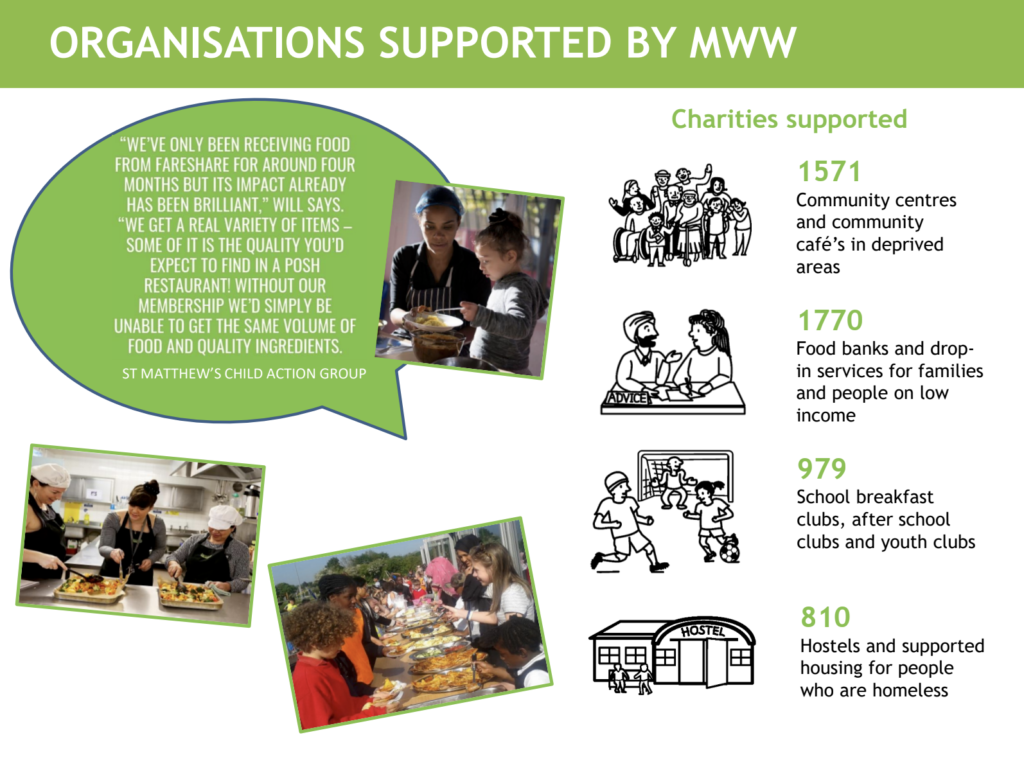
Due to the closure of schools, as a result of the ongoing COVID-19 pandemic, kidsfruit donated all of the pre-ordered produce (that was originally intended for schools) to FareShare. This food was used to provide meals for foodbanks, hostels and other organisations dedicated to helping and feeding people during this time. This also meant that no food went to waste, as instead it was diverted to help people who were in need of fresh meals. The demand for food during the pandemic increased dramatically, which meant that FareShare had to triple the number of meals that they were providing each day. Both Kidsfruit and MWW are proud supporters of this cause.
Find out more at on the FareShare website.
Halloween is one of our favourite times of the year! We love to dress up with our friends and going trick-or-treating, but why not try these healthy and delicious spooky smoothies instead of some of those sweets this year?
These smoothies are delicious and they look super cool with your Halloween costume and decorations! Simply use a black marker pen to draw your spooky face or design on the outside of a sterilised jar. Then follow our quick and easy recipes below to create the perfect fruity drink.

Orange Jack O’Lantern Smoothie:
- 1 banana
- 1 small mango
- 2 passion fruits
- 2 squeezed oranges
- 1/4 cup of water (if needed)
Green Frankenstein Smoothie:
- 2 bananas
- 1 small mango
- 1 handful of blueberries
- 1 handful of spinach
- 1/4 cup of water
You could even save a few blueberries and add them to the top of the smoothie to look like Frankenstein’s hair!
Red Bloody Spider Smoothie:
- 1 handful of fresh raspberries
- 1 handful of fresh strawberries
- 1/4 cup of cranberry juice
- ice
- 3 spoonfuls of strawberry yoghurt
White Ghost Smoothie:
- 2 bananas
- 2 apples (without the core or skin)
- 1 tablespoon of peanut butter
- 1/2 cup of milk (or milk alternative)
- ice
Simply prepare your ingredients and then place them in the blender to create your spooky Halloween drink! You could even try coming up with your own recipe! Let us know how you get on!
We have started to provide locally grown apples to children in schools in Kent!
The Kidsfruit team are committed to reducing our impact on the environment. As part of this, our depot in Headcorn, Kent has started to buy apples directly from smaller apple and pear growers in the surrounding areas. If you live in Margate, Dover, Folkestone, West Kent, Sussex or Surrey, and your school is a Kidsfruit customer, then you will have started to receive apples that are grown locally in your area!
 We think apples taste delicious when they are grown right on your doorstep!
We think apples taste delicious when they are grown right on your doorstep!
Reducing our waste!
We love to think of new ways to decrease the amount of waste that we produce. Currently, our lorries return the boxes (that are used to store the apples) to the growers so that they can be reused, instead of being thrown away! As well as this, once the lorries have delivered fruit to primary schools, they collect more fruit on their returning journey to reduce the number of drives that are taken.
Our farms across the UK are constantly planting, growing and harvesting fruits and vegetables for you to eat! Here is an update on all the activities that have been happening over the past month with some photos to take a look at.
Harvesting
September is a huge harvesting season for our UK farms, and there is loads of picking to be done! This list of fruit and vegetables that we harvested in September include; spring onions, jumbo onions, rhubarb, pak choi, choi sum, tenderstem broccoli, courgettes, marrows, runner beans, string beans, stringless beans and squashes.
We are very proud of tenderstem broccoli which has grown very well this year and so there are lots to pick! It has also been a successful growing season for our squashes, one of our favourite vegetables to put in soups as autumn begins. Squashes are beautiful shades of orange and yellow, and we love how they brighten up the fields.
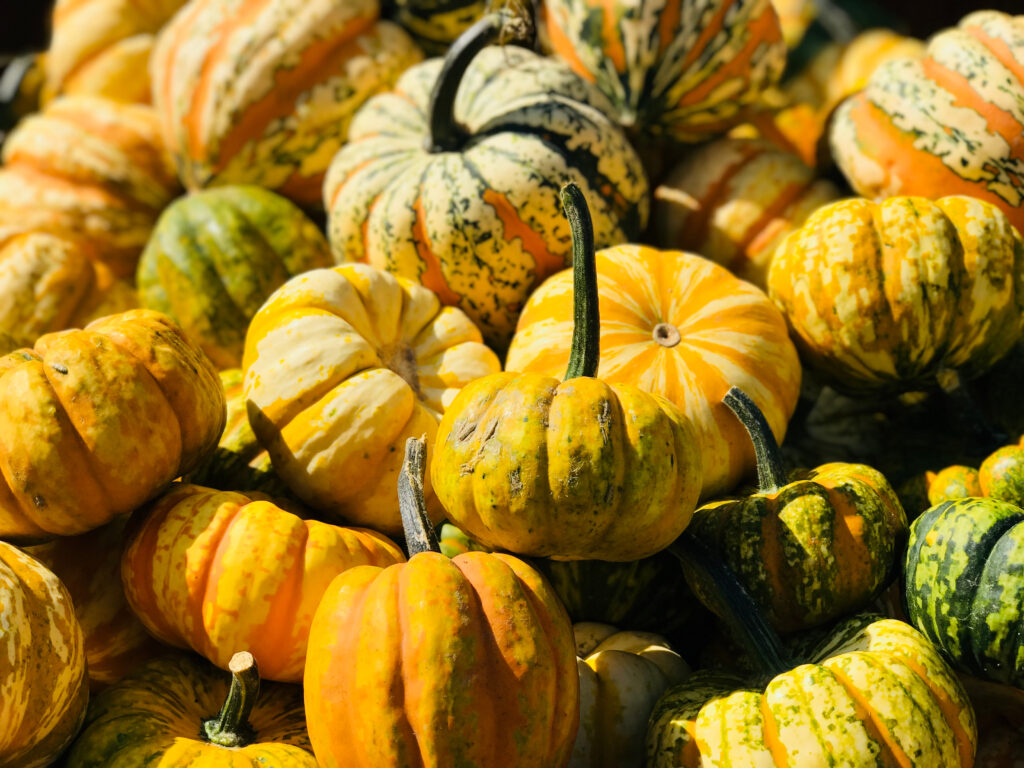 We love the bright colours of the squashes growing in the fields!
We love the bright colours of the squashes growing in the fields!
Planting & Growing
September means the end of the growing season for our marrows, so we have harvested our last crop of plants. We have also finished planting the last of our pay choi seeds for this season. We cannot wait to see how our vegetables continue to grow over October!
The end of September saw the introduction of radishes into primary schools across the country. This allowed over 2.3 million children to try this delicious vegetable, at school, for the first time!
The radishes, which were grown in Norfolk, have traditionally been a staple in British salads and a favourite for many parents and grandparents. This is the first time that these vegetables have been introduced into the healthy snacking agenda. This is part of a plan to introduce children to a wider range of fruits and vegetables that they may not have seen or heard of before.
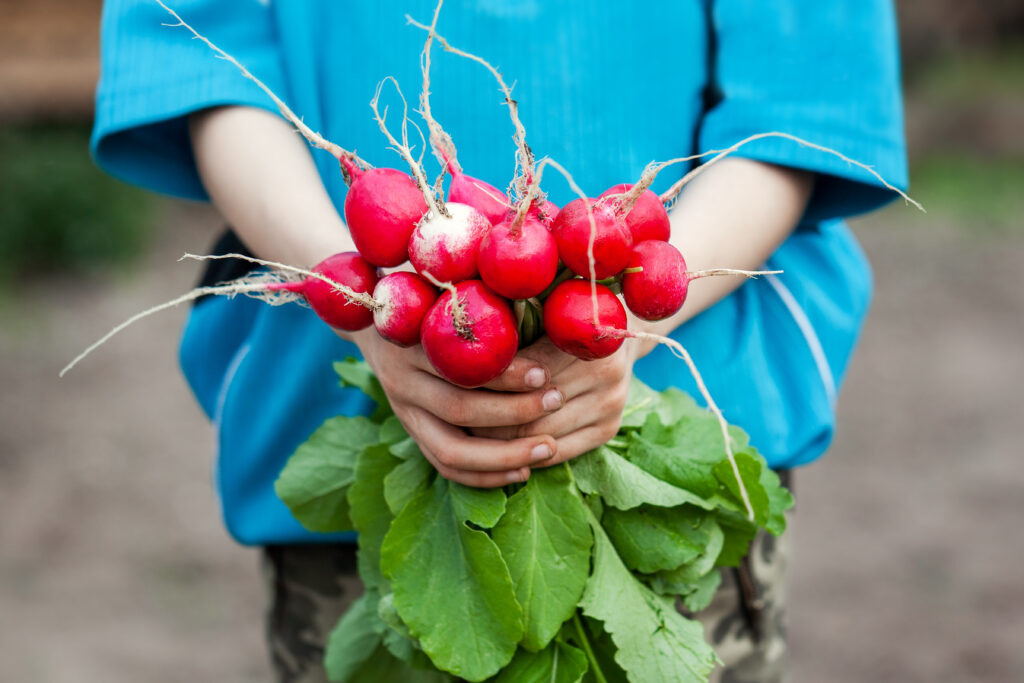
Radishes are small and bright pink or purple in colour. They are a member of the mustard family, and so they have a peppery flavour, with a crunch and juicy texture. You can eat the entire plant, including the leaves, so nothing has to go to waste!
British grown radishes are available in shops from April through to the end of October – so there is still plenty of time to buy some from the supermarkets and try them for yourself! They are a very fast-growing plant, taking only 25 days to grow from seed. Why don’t you give it a try at home? (click here for the method).
Check out our quick and easy, step-by-step, video for making avocado on toast! This is one of our favourite meals. It perfect for lunch or breakfast, to set you up for another day full of activities and excitement!
